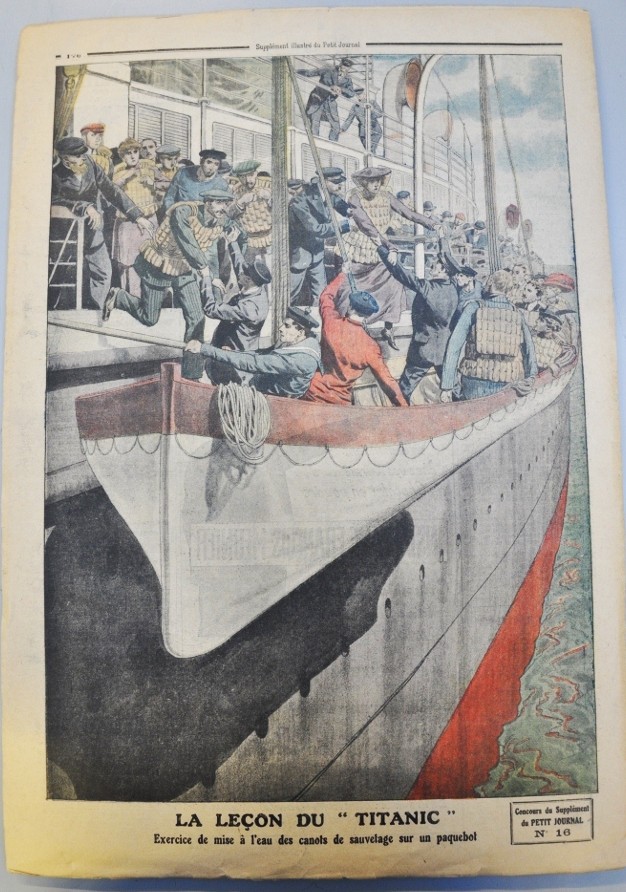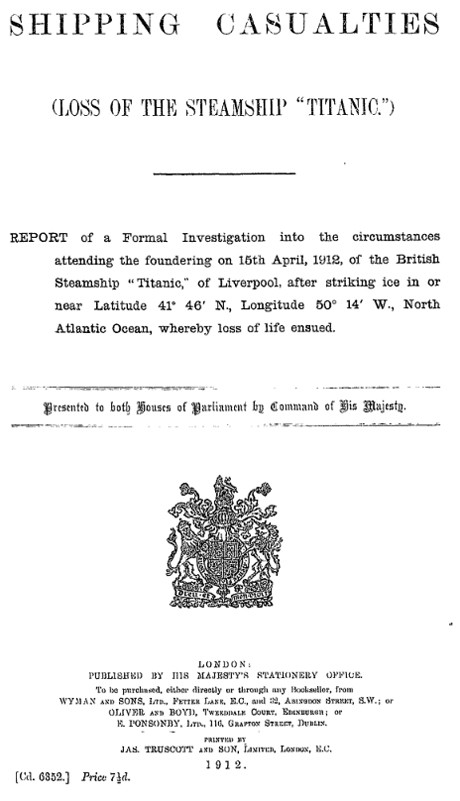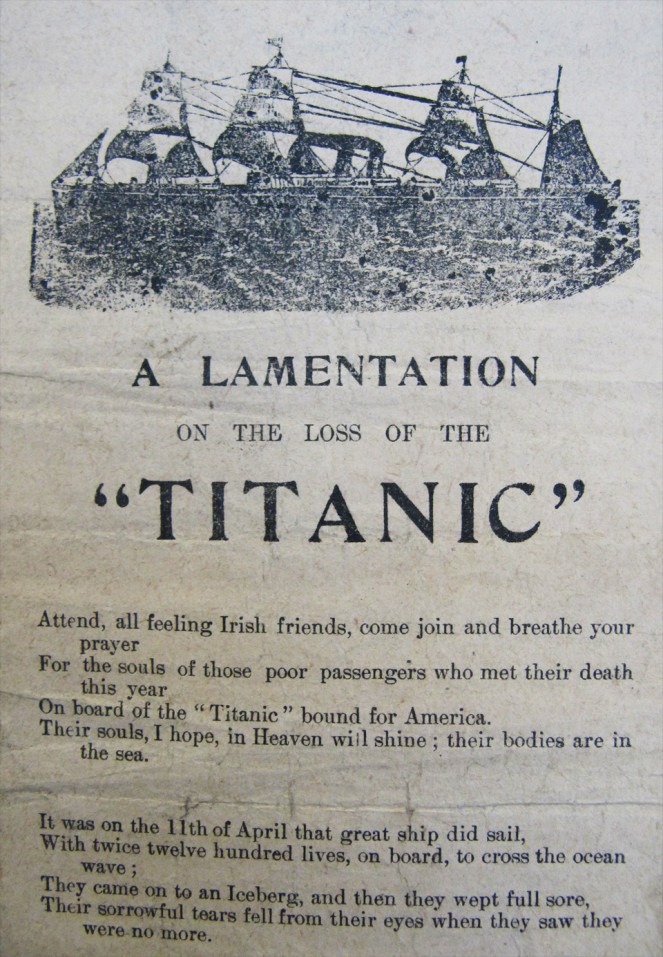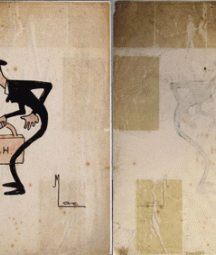by Áine Finegan, Reference Team Student

This illustration in our Prints & Drawings collection shows that safety lessons were learned following the sinking of the Titanic (supplement from the Parisian daily, Le Petit Journal, no. 16, June 1912)
The centenary of the sinking of the Titanic is fast approaching with the one-hundredth anniversary of both her maiden voyage and demise in April 2012. The NLI has some fascinating online resources for gaining an Irish perspective on this disaster which continues to intrigue us today.
The story of the Titanic has strong links to Ireland, having been built in Belfast by Harland and Wolff and making her final stop in Cobh (formerly Queenstown), Co. Cork. Around 120 Irish passengers travelled on the doomed ship, many of whom were emigrating to North America in search of new beginnings. In addition to passengers, a number of Titanic staff and key figures onboard were Irish, such as the ship’s designer Thomas Andrews and the infamous stewardess Violet Jessop, who survived the sinking of both the Titanic and its sister ship the Britannic.
Browsing the online Irish Newspaper Archives (available to all readers when you visit the NLI), it is clear from the level of newspaper coverage of the disaster how much attention the sinking received in Ireland. Lists of surviving passengers and crew members were a key source of information for anxious families waiting for news.

Sunday Independent, 21 April 1912
For a more personal perspective on the tragedy, Roger Casement’s letters to Gertrude Bannister from Belfast on the 20th and 23rd of April 1912 give us an indication of how prominent the fate of the Titanic was in the public mind; “Nobody talks of Home Rule ... as everyone is thinking of the ‘Titanic’ ... This dreadful ‘Titanic’ disaster overhangs all minds here in Belfast.” (NLI Ms. 31,725). Indeed the sinking was referred to at the Home Rule National Convention a fortnight after the sinking, with John Redmond expressing the sympathies of the Irish Parliamentary Party to all those affected. (P.S. Letters, photos, documents, etc. by and about Roger Casement, John Redmond and many other key figures in the Easter Rising are all available to view in our online exhibitition The 1916 Rising: Personalities and Perspectives.)

Title page of the British Parliamentary report on the sinking of the Titanic
I was curious to see if the findings of the British Parliamentary enquiry into the sinking would have information on the experiences of Irish passengers onboard the Titanic. Presented to the British Parliament in July 1912 with the catchy title Shipping casualties (loss of the steamship “Titanic.”). Report of a formal investigation into the circumstances attending the foundering on 15th April, 1912, of the British steamship "Titanic," of Liverpool, after striking ice in or near latitude 410 46' N., Longitude 500 14' W., North Atlantic Ocean, whereby loss of life ensued, this report aimed to understand how the disaster unfolded and what measures could be taken to safeguard against future tragedies at sea. The vast majority of Irish passengers travelling on the Titanic were travelling in third class and the story of their evacuation being prevented until it was too late is well known to us today, but the British Parliamentary report found that the low rate of survival among third class passengers was accounted for “by the great reluctance of the third class passengers to leave the ship [and] by their unwillingness to part with their baggage”. In response to rumours that the third class passengers had been discriminated against, the report states with no ambiguity that “They were not unfairly treated”, thus dismissing all accusations of prejudice against those in the lower decks. It all makes for fascinating reading and you can access this report online when you visit the NLI through the House of Commons Parliamentary Papers online. (This HCPP resource allows you to access Parliamentary Papers from 1801 to 2003/04 and Hansard from 1803-2005 online!)

A Lamentation on the Loss of the ''Titanic'', one of our vast selection of street ballads. In typical fashion, the illustration is probably the only block of a ship that the printer had to hand, and is pretty inappropriate as a representation of the most modern ship in the world
Finally, if you’re looking to learn about individual Irish passengers and crew on the Titanic, Senan Molony’s book The Irish Aboard Titanic is a fascinating read. It features amazing tales of survival and tragedy, such as the account of 21 year old Daniel Buckley, who managed to escape on a lifeboat after being disguised with a woman’s shawl, only to be killed in action on the French-Belgian border shortly before the end of World War One. Another standout story is of a message-in-a-bottle which was reportedly washed up near the home of Jeremiah Burke, a 19 year old who did not survive the disaster. The message simply said “From Titanic. Good Bye all. Burke of Glanmire, Cork”. His family believed it to be genuine and still possess it today.
Even one hundred years after the event, the story of the Titanic is such a universally well-known one that we may perhaps feel we’ve heard it all before. However, exploring primary resources like contemporary newspapers and Parliamentary reports give us a new perspective on the memorable events of April 1912.

